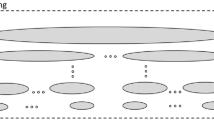Abstract
Many quality improvement activities can be guided by defect analysis. Development defect analysis of software components can be used to guide testing with the goal of focusing on parts of the software that were fault-prone during development. We perform a case study using defect data from a large software product (medical record system). In this study, development defect data help to identify which parts of the software might profit from being tested more and earlier because they were fault-prone during development. Several testing guidelines are proposed to make system test more effective and more efficient.
Similar content being viewed by others
References
Ash, D., Alderete, J., Oman, P.W., and Lowther, B. 1994. “Using software models to track code health,” Proc. Int. Conf. Software Maintenance, Victoria, BC, Canada, September, pp. 154-160.
Biyani, S. and Santhanam, P. 1998. “Exploring defect data from development and customer usage on software modules over multiple releases,” Proc. Ninth Int. Symp. Software Reliability Engineering, Paderborn, Germany, November, pp. 316-320.
Eick, S., Loader, C., Long, M., Votta, L., and Vander Wiel, S. 1992. “Estimating software fault content before coding,” Proc. 14th Int. Conf. Software Engineering, Melbourne, Australia, pp. 59-65.
Fenton, N. and Ohlsson, N. 2000. “Quantitative analysis of faults and failures in a complex software system,” IEEE Transactions on Software Engineering 26(8): 797-814.
Frankl, P., Hamlet, R., Littlewood, B., and Strigini, L. 1998. “Evaluating testing methods by delivered reliability,” IEEE Transactions on Software Engineering 24(8): 586-601.
Khoshgoftaar, T.M. and Szabo, R.M. 1994. “Improving code churn predictions during the system test and maintenance phases,” Proc. Int. Conf. Software Maintenance, Victoria, BC, Canada, September, pp. 58-66.
Khoshgoftaar, T.M. and Allen, E.B. 1998. “Predicting the order of fault-prone modules in legacy software,” Proc. Ninth Int. Symp. Software Reliability Engineering, Paderborn, Germany, November, pp. 344-353.
Musa, J., Iannino, A., and Okumoto, K. 1987. Software Reliability: Measurement, Prediction, Application, New York, NY: McGraw-Hill.
Musa, J. 1998. “Applying failure data to guide decisions,” Software Reliability Engineering, New York, NY: McGraw-Hill.
Ohlsson, N., Helander, M., and Wohlin, C. 1996. “Quality improvement by identification of fault-prone modules using software design metrics,” Proc. Int. Conf. Software Quality, Ottowa, Canada, pp. 1-13.
Ohlsson, M. and Wohlin, C. 1996. “Identification of green, yellow and red legacy components,” Proc. Int. Conf. Software Maintenance, Bethesda, Washington, DC, pp. 6-15.
Ohlsson, M., von Mayrhauser, A., McGuire, B., and Wohlin, C. 1999. “Code decay analysis of legacy software through successive releases,” Proc. IEEE Aerospace Conf., Section 7.401.
Sahinoglu, M. and Alkhalidi, A.K. 1997. “A compound poisson LSD stopping rule for software reliability,” Proc. 5th World Meeting of ISBA, Satellite Meeting to ISI-97, Istanbul.
Schneidewind, N.F. 1997. “Software metricsmodel for quality control,” Proc. Int. Symp. Software Metrics, Albuquerque, New Mexico, pp. 127-136.
von Mayrhauser, A., Wang, J., Ohlsson, M., and Wohlin, C. 1999. “Deriving a fault architecture from defect history,” Proc. Int. Symp. Software Reliability Engineering, Boca Raton, FL, pp. 129-146.
Wohlin, C. and Runeson, P. 1998. “Defect content estimations from review data,” Proc. Int. Conf. Software Engineering, Kyoto, Japan, pp. 400-409.
Wohlin, C. and Runeson, P. 1995. “An experimental evaluation of capture-recapture in software inspections,” Journal of Software Testing, Verification and Reliability 5(4): 213-232.
Author information
Authors and Affiliations
Rights and permissions
About this article
Cite this article
Andrews, A., Stringfellow, C. Quantitative Analysis of Development Defects to Guide Testing: A Case Study. Software Quality Journal 9, 195–214 (2001). https://doi.org/10.1023/A:1013353520454
Issue Date:
DOI: https://doi.org/10.1023/A:1013353520454




